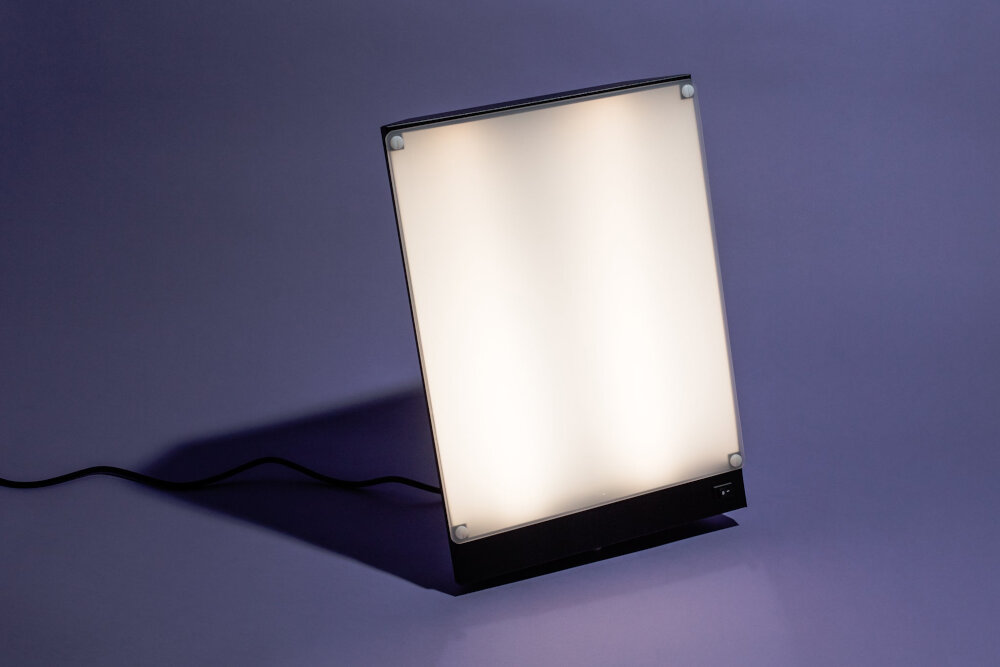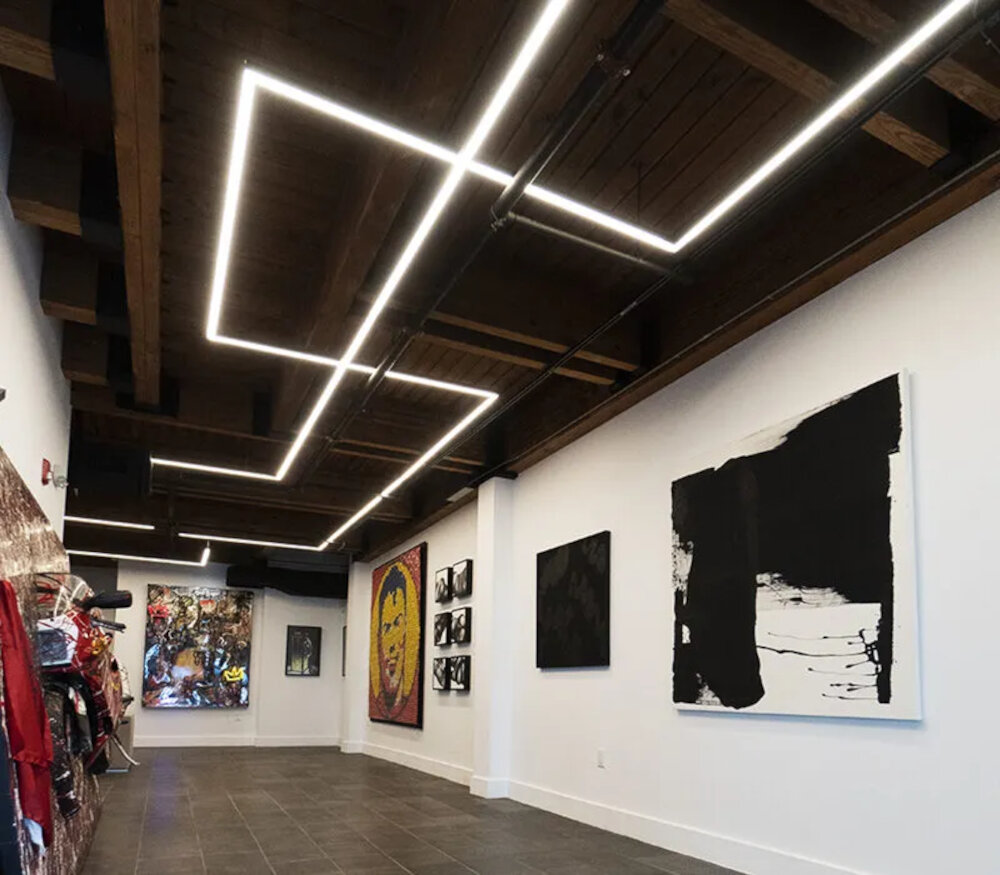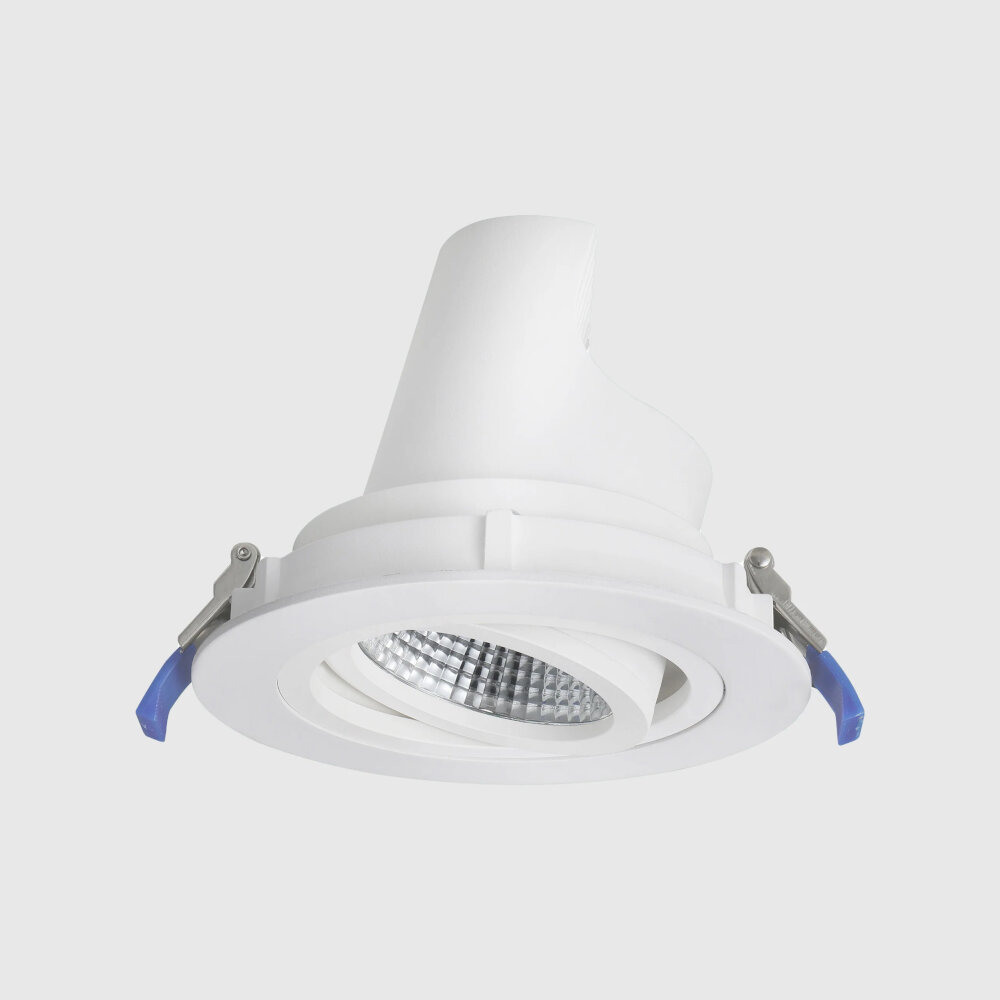Discovering the Innovator: The Fascinating History of LED Lights and their Inventor

LED lights have become the most popular and energy-efficient lighting solution available today. These tiny yet powerful bulbs are used in everything from streetlights to televisions, and they have revolutionized the way we light our homes and businesses. But where did this incredible technology come from, and who is responsible for its creation? In this article, we will take a journey through the fascinating history of LED lights and the inventor behind the innovation. The story of LED lights is one of perseverance, creativity, and scientific breakthroughs. It begins with the discovery of electroluminescence in the early 1900s, a phenomenon in which a material emits light when an electric current passes through it. However, it wasn’t until the 1960s that researchers began to experiment with semiconductor materials and create practical applications for this technology. One of the most significant breakthroughs came in 1962 when Nick Holonyak Jr., a young scientist at General Electric, developed the first practical LED using gallium arsenide phosphide. From there, the LED revolution took off, and today it is a multi-billion dollar industry that continues to evolve and improve.
Light Emitting Diodes (LEDs) are semiconductor devices that convert electrical energy into light energy. They are small, solid-state lights that are highly efficient, durable, and long-lasting. Unlike traditional incandescent bulbs, which rely on a filament to produce light, LED lights utilize a semiconductor material that emits light when an electrical current is passed through it. LEDs were first discovered in the early 1900s, but it wasn’t until the 1960s that they were developed to the point where they could be used for practical applications. Today, LED lights are used in a wide range of applications, from lighting homes and businesses to illuminating stadiums and skyscrapers. Their energy efficiency and long lifespan make them an attractive option for environmentally conscious consumers and businesses alike.
The invention of LED lights has revolutionized the way we light up our homes, offices, and streets. LED lights are energy-efficient, long-lasting, and eco-friendly, which makes them an ideal choice for sustainable lighting solutions. They emit less heat and consume less electricity than traditional incandescent bulbs, which not only saves energy but also reduces the carbon footprint. Moreover, LED lights have a wide range of applications, including in the automotive industry, entertainment, and medical field. As a result, the demand for LED lights has grown significantly over the years, and their impact on society has been immense. From reducing energy costs to creating a more sustainable future, LED lights have truly transformed the world we live in.
Early Life of the Inventor

The inventor of LED lights, Nick Holonyak Jr., was born in southern Illinois in 1928. Growing up, he was fascinated by electricity and spent much of his time tinkering with electrical devices. His family was poor, and he worked on the farm and in the coal mines to help make ends meet. Despite this, he was a dedicated student and excelled in math and science. After high school, Holonyak attended the University of Illinois, where he earned a degree in electrical engineering. He then went on to earn a PhD in physics from the University of Illinois, where he studied under John Bardeen, the co-inventor of the transistor. It was during this time that Holonyak began working on what would become one of his most significant inventions: the LED light. His early work on LEDs was slow going, and he faced many challenges along the way. However, his perseverance paid off, and he eventually developed the first practical LED in 1962.
The inventor of LED lights is Nick Holonyak Jr., an American engineer and physicist. Born in 1928 in Zeigler, Illinois, Holonyak obtained a Bachelor’s degree in Electrical Engineering from the University of Illinois, and later earned a Ph. D. from the University of Illinois in 1954. He worked at Bell Labs and then at General Electric, where he invented the first visible LED in 1962. Holonyak’s invention revolutionized the lighting industry and is now used in a wide range of applications, from household lighting to electronic devices. He has received numerous awards and honors for his contributions to the field of optoelectronics, including the National Medal of Science in 2002. Holonyak’s legacy as the inventor of LED lights has made a significant impact on the world, and his pioneering work continues to inspire innovation in science and engineering.
Education and early career played a pivotal role in the life of Nick Holonyak Jr., the inventor of the first practical LED. Holonyak graduated with a Bachelor of Science in Electrical Engineering from the University of Illinois, followed by a Master of Science from the University of Illinois and a Ph. D. in Electrical Engineering from the University of Illinois. After completing his education, Holonyak worked at Bell Labs and later at General Electric, where he developed the first visible LED in 1962. Holonyak’s education and experiences prepared him to create the LED technology that has become ubiquitous in modern life, including in smartphones, televisions, and energy-efficient lighting.
The inventor of LED lights, Nick Holonyak Jr., became interested in the technology during his years as a graduate student at the University of Illinois. He was studying the properties of semiconductors and was searching for a way to create a more efficient light source. It was during this time that he began experimenting with gallium arsenide, a material that had been used in transistors but had never been applied to lighting. Holonyak was determined to find a way to use this material to create a light source that was brighter, more energy-efficient, and longer-lasting than traditional incandescent bulbs. After years of experimentation, he finally succeeded in creating the first visible LED in 1962, revolutionizing the world of lighting forever.
Invention of LED Lights

The invention of LED lights is a fascinating tale of innovation and perseverance. While the first LED was discovered in 1907, it wasn’t until the 1960s that the first practical LED was invented. Nick Holonyak, a researcher at General Electric, is credited with inventing the first practical LED in 1962. Holonyak was working on semiconductor research when he discovered that a semiconductor material made of gallium arsenide emitted light when electricity was passed through it. This discovery led to the creation of the first LED, which emitted a red light. However, it wasn’t until the 1970s that LED lights became commercially available. The first LED lights were used in electronic devices, such as calculators and watches, but it wasn’t until the 1990s that LED lights started to be used in lighting applications. Today, LED lights are used in a wide range of applications, including automotive lighting, street lighting, and home lighting. They are energy-efficient, long-lasting, and offer a wide range of colors, making them an ideal choice for a variety of applications. The invention of LED lights has revolutionized the lighting industry and has had a significant impact on energy consumption, making it a key innovation in the fight against climate change.
The invention process is a complex and multifaceted journey that requires ingenuity, patience, and a deep understanding of the problem at hand. It typically involves a series of steps, starting with ideation and research, followed by prototyping and testing, and culminating in the development and commercialization of a viable product or service. In the case of LED lights, the process was particularly challenging, as it required the invention of entirely new materials and technologies. The inventor of LED lights, Nick Holonyak Jr., spent years experimenting with different materials and configurations until he finally discovered the right combination that would enable the creation of practical and efficient LED lights. His dedication and persistence paid off, and his invention has since revolutionized the lighting industry, paving the way for a more sustainable and energy-efficient future.
The development of LED lights was a challenging task for the inventor, Nick Holonyak. One of the major hurdles was the difficulty in finding the right semiconductor material that could emit light efficiently. Holonyak experimented with various materials before discovering gallium arsenide phosphide, which was able to emit red light. Another challenge was achieving higher levels of brightness and efficiency. Holonyak had to work on improving the design and structure of the LED to increase its brightness and energy efficiency. Additionally, overcoming the cost and manufacturing challenges associated with producing LED lights on a large scale was a significant obstacle. Despite these challenges, Holonyak’s persistence and innovation led to the creation of LED lights, which have since revolutionized the lighting industry.
The invention of LED lights revolutionized the lighting industry and had a significant impact on the career of their inventor, Nick Holonyak Jr. With the development of the first visible LED in 1962, Holonyak became a pioneer in the field of semiconductor electronics. His groundbreaking work on LED lights led to the creation of the red LED, which is now widely used in traffic lights, indicators, and digital displays. Holonyak’s work also contributed to the development of other LED colors, such as blue and green, which led to the creation of energy-efficient white LED lights. The success of his invention brought him worldwide recognition and numerous awards, including the National Medal of Science in 1990. His work on LED lights continues to impact the lighting industry and is a testament to the power of innovation and perseverance.
Advancements in LED Light Technology

Advancements in LED light technology have revolutionized the way we light our homes, businesses, and public spaces. With their efficient and durable design, LED lights have become the preferred lighting option for many people around the world. Over the years, the development of LED technology has led to brighter, more energy-efficient, and longer-lasting lights that have also become more affordable for consumers. These advancements have made LED lights an attractive option for not just lighting, but also for use in displays, signage, and electronic devices. One of the most significant advancements in LED light technology has been in the area of color. LED lights are now available in a wide range of colors, making them a popular choice for decorative lighting. Additionally, the development of smart LED technology has enabled users to control their lighting through smart devices, allowing them to adjust the color, brightness, and timing of their lights from anywhere in the world. As the technology continues to improve, we can expect to see LED lights become even more versatile, durable, and energy-efficient, making them an even more attractive lighting option for consumers and businesses alike.
Since the invention of LED lights in the 1960s, the technology has undergone significant developments. The first LED lights were red, and it took several years before other colors were produced. The introduction of blue LEDs in the 1990s enabled the creation of white LED lights, which are now prevalent in many applications. Modern LED lights are highly efficient, producing more light per watt of energy than traditional incandescent bulbs. They also have a longer lifespan, lasting up to 50,000 hours. Recent developments have focused on improving the color accuracy and brightness of LED lights, making them more suitable for use in a wider range of applications, including lighting for homes, offices, and outdoor areas.
Today, LED lights are used in a wide range of applications, from residential and commercial lighting to automotive and street lighting. They are highly energy-efficient and long-lasting, making them a popular choice for environmentally conscious consumers. LED lights are also used in electronic devices such as televisions, computer screens, and mobile phones, providing clear and bright displays. In addition, LED lights have found their way into the medical field, where they are used for surgical lighting and as a treatment for skin conditions. With their versatility and efficiency, LED lights are sure to continue to play a significant role in our lives for years to come.
The future potential for LED lights is vast and exciting. With technological advancements, LEDs have become more efficient, affordable, and versatile than ever before. LED lights are already used in various applications, such as home lighting, automotive lighting, and street lighting. The potential to integrate LEDs into various industries, such as agriculture, medicine, and entertainment, is becoming increasingly feasible. Furthermore, the potential for LEDs to reduce energy consumption and carbon emissions is substantial. As we continue to discover new uses for LED lights, their impact on our daily lives will only increase. The future is bright for LED lights, and the possibilities for innovation are endless.
Legacy of the Inventor

The legacy of Nick Holonyak Jr., the inventor of LED lights, is one that has revolutionized the world of lighting technology. Holonyak’s invention of the first visible LED in 1962 paved the way for a new era of energy-efficient lighting that has since become ubiquitous in our daily lives. His work in developing the LED technology not only transformed the way we light our homes and offices, but it also has had a significant impact on a wide range of industries, from automotive to medical devices. Throughout his career, Holonyak was committed to pushing the boundaries of science and engineering, and his contributions to the field of semiconductor technology have been immeasurable. His work on the LED has led to a wide range of applications, from traffic lights to digital displays to the screens we use on our smartphones and laptops. Holonyak’s legacy continues to inspire generations of engineers and scientists to pursue innovative solutions to global problems, and his invention of the LED remains one of the most significant technological breakthroughs of our time.
The inventor of LED lights, Nick Holonyak, has received numerous awards and recognitions for his groundbreaking invention. In 2002, he was awarded the National Medal of Technology and Innovation by President George W. Bush, which is the highest honor bestowed upon inventors and innovators in the United States. Additionally, he has been inducted into the National Inventors Hall of Fame, the National Academy of Engineering, and the Engineering and Science Hall of Fame. Holonyak’s contributions to the field of LED technology have revolutionized the way we use and consume energy, and his achievements have not gone unnoticed by the scientific and engineering communities.
The inventor behind LED lights, Nick Holonyak, has made a significant impact on the field of lighting technology. His invention allowed for energy-efficient lighting that has since revolutionized the industry. LED lights have a longer lifespan and consume less energy compared to traditional incandescent bulbs. They have also opened up opportunities for new applications in fields such as automotive lighting, telecommunications, and even medical equipment. Holonyak’s innovation has paved the way for environmental sustainability by reducing energy consumption and promoting the use of renewable energy sources. His contributions to lighting technology have undoubtedly left a lasting impression on the world, and his legacy continues to inspire future inventors and innovators in the field.
The influence of an inventor on other inventors and innovators cannot be overstated. In the case of Nick Holonyak, the inventor of the LED light, his invention has had a profound impact on the field of lighting and beyond. Holonyak’s pioneering work paved the way for the development of more efficient and long-lasting lighting solutions, which has since revolutionized various industries, including electronics, transportation, and healthcare. Moreover, his work has inspired countless innovators to push the boundaries of what is possible in their respective fields, demonstrating the power of a single idea to ignite a wave of creativity and innovation. Holonyak’s legacy serves as a testament to the transformative potential of invention, and a reminder of the importance of nurturing and supporting the creative minds that drive progress and change.
Nick Holonyak Jr., an American engineer and scientist, is widely recognized as the inventor of LED light technology. In the early 1960s, Holonyak was working at General Electric when he made the groundbreaking discovery that a semiconductor material, gallium arsenide phosphide, could emit light when a voltage was applied. He then went on to develop the first practical LED, which emitted red light, and continued to make significant contributions to the technology over the years. Holonyak’s work paved the way for the development of LEDs in a wide range of colors and applications, including in lighting, displays, and communication technologies. He is considered a pioneer in the field and his contributions have had a profound impact on modern society.
Innovation and creativity are key drivers of progress, enabling us to push boundaries and challenge conventional thinking. The history of LED lights is a testament to this, with the invention of this revolutionary technology changing the face of lighting forever. The development of LED lights required significant innovation and creativity, with inventors experimenting with new materials and technologies to create a more efficient and cost-effective lighting solution. This innovation has led to a range of benefits, from reduced energy consumption and lower costs to increased durability and longer lifespans. Without the creativity and ingenuity of the inventors behind LED lights, we would not have the advanced lighting solutions we enjoy today, highlighting the crucial role that innovation and creativity play in driving progress.
In conclusion, the legacy of Nick Holonyak Jr. as the inventor of LED lights is one that will continue to impact the world for generations to come. His groundbreaking work paved the way for the creation of more energy-efficient and cost-effective lighting solutions that have transformed the way we live and work. As LED technology continues to evolve and improve, it offers a promising future for a more sustainable and eco-friendly world. The potential applications of LED lights are vast and varied, from lighting up entire cities to powering small electronic devices. With ongoing research and development, we can expect even more innovative uses for LED lights in the future. Holonyak’s contributions to the field of lighting technology will undoubtedly inspire future generations of inventors and innovators to push the boundaries of what is possible.
Conclusion

In conclusion, the story of the inventor of LED lights and the fascinating history behind this innovative technology is a testament to the power of human ingenuity and determination. The journey from the early discovery of electroluminescence to the development of the first LED by Nick Holonyak Jr. and subsequent advances in LED technology has revolutionized the way we light our world. LED lights have become an essential part of our daily lives, from lighting up our homes and workplaces to enhancing the visual experience in our favorite electronic devices. The legacy of Nick Holonyak Jr. and his fellow innovators in the field of LED technology will continue to inspire future generations to push the boundaries of what is possible and to strive for new heights of creativity and innovation.




